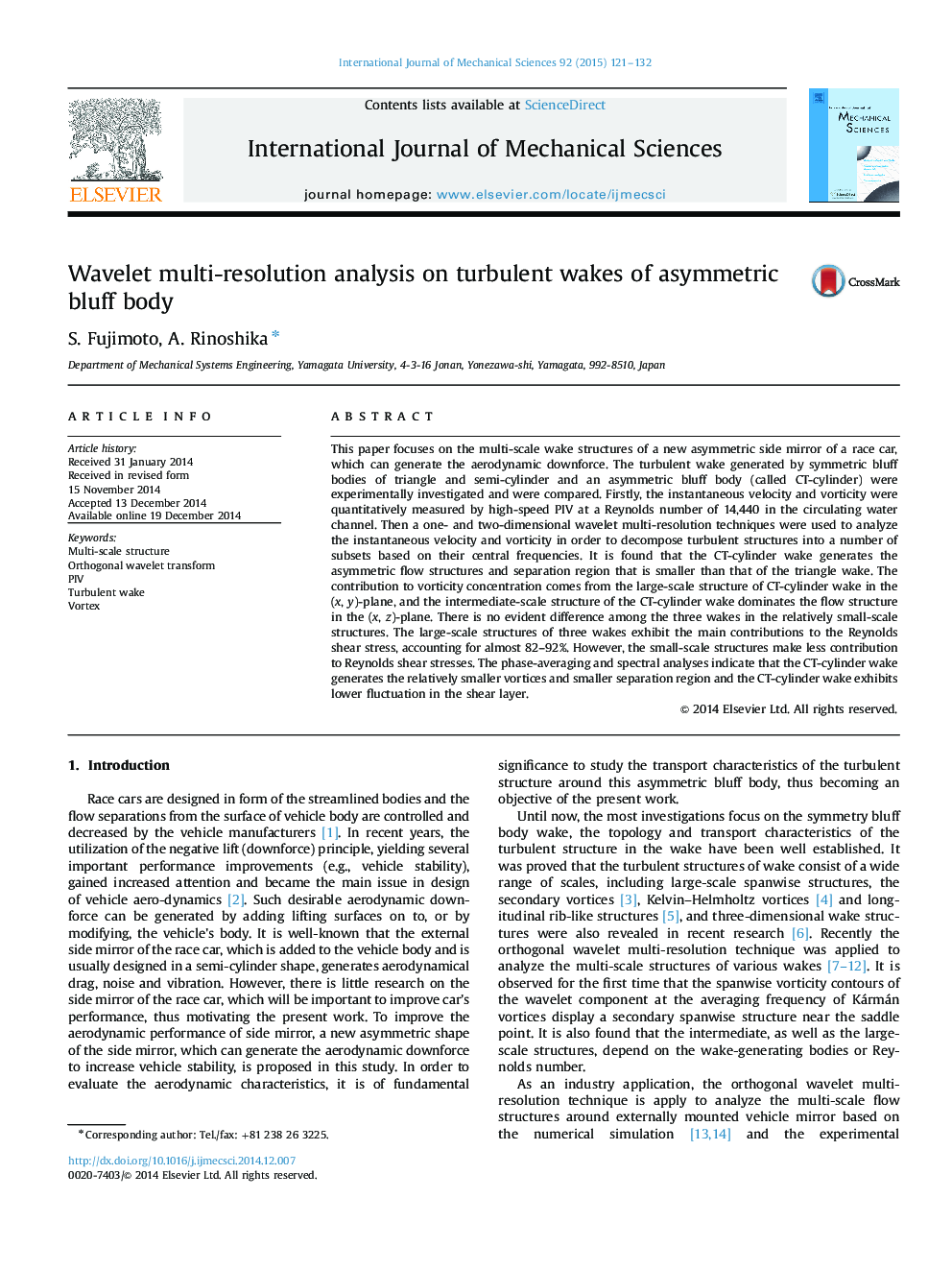| Article ID | Journal | Published Year | Pages | File Type |
|---|---|---|---|---|
| 782291 | International Journal of Mechanical Sciences | 2015 | 12 Pages |
•Multi-scale asymmetric wake structures are studied by PIV and wavelet transform.•The large-scale asymmetric structure makes the largest contribution to vorticity.•There is no difference in the relatively small-scale structures among various wakes.•The large-scale wakes exhibit the main contributions to the Reynolds stress.
This paper focuses on the multi-scale wake structures of a new asymmetric side mirror of a race car, which can generate the aerodynamic downforce. The turbulent wake generated by symmetric bluff bodies of triangle and semi-cylinder and an asymmetric bluff body (called CT-cylinder) were experimentally investigated and were compared. Firstly, the instantaneous velocity and vorticity were quantitatively measured by high-speed PIV at a Reynolds number of 14,440 in the circulating water channel. Then a one- and two-dimensional wavelet multi-resolution techniques were used to analyze the instantaneous velocity and vorticity in order to decompose turbulent structures into a number of subsets based on their central frequencies. It is found that the CT-cylinder wake generates the asymmetric flow structures and separation region that is smaller than that of the triangle wake. The contribution to vorticity concentration comes from the large-scale structure of CT-cylinder wake in the (x, y)-plane, and the intermediate-scale structure of the CT-cylinder wake dominates the flow structure in the (x, z)-plane. There is no evident difference among the three wakes in the relatively small-scale structures. The large-scale structures of three wakes exhibit the main contributions to the Reynolds shear stress, accounting for almost 82–92%. However, the small-scale structures make less contribution to Reynolds shear stresses. The phase-averaging and spectral analyses indicate that the CT-cylinder wake generates the relatively smaller vortices and smaller separation region and the CT-cylinder wake exhibits lower fluctuation in the shear layer.
Graphical abstractFigure optionsDownload full-size imageDownload as PowerPoint slide
